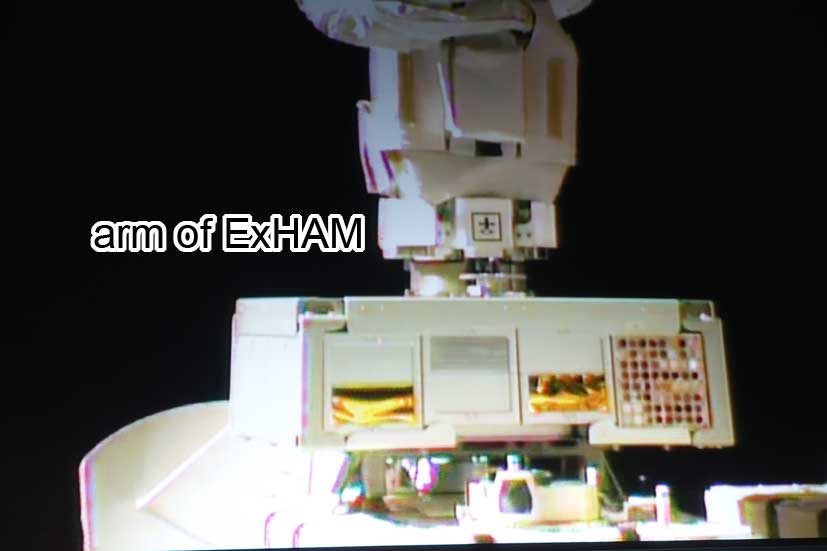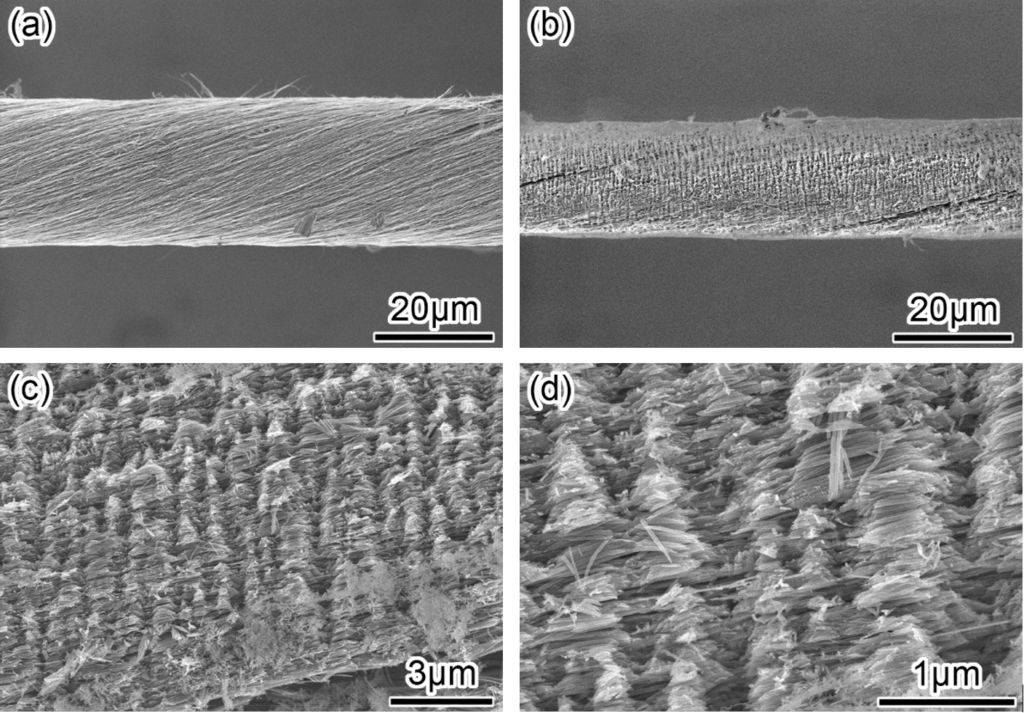Can light and strong CNTs be used as a material for rockets and orbit satellites?
Most of the materials used in outer space are metals. Until now, carbon materials have hardly been used. Therefore, with the aim of future space utilization, we carried out research to investigate the durability by mounting CNT on the International Space Station (ISS) in collaboration with Obayashi corporation.
The environment of outer space is very harsh. Since it is not surrounded by the atmosphere like the earth, the surface directly exposed to sunlight becomes extremely hot, while the shadowed area is below -200°C. Furthermore, there are strong UV irradiation and collisions with cosmic dust. What happens when CNT is used for a long time in such an environment?
For two years, we carried out a mission of attaching it to the space exposure window outside the ISS and continuing to orbit the earth. After that, we collected CNTs on the earth and investigated what kind of changes had occurred.

Damages on CNT
When the returned CNTs were observed with an electron microscope, it was found that the CNT surface had numerous scratches. As a result of the analysis, it was found that the cause was the oxygen atom that was dilutely left over 400 km above the ground around which the ISS orbited. The ISS is moving at a high speed of 9km per second. Oxygen atoms are lightweight, but because CNTs collide with oxygen atoms at a tremendous speed, their relative kinetic energy increases, and CNTs have been scooped out.

To use CNT in space…
So how can we use CNT in outer space? First, when it is used above the orbit of the ISS, it seems that there is no problem due to the small effect of oxygen atoms. On the other hand, for use in low orbits where oxygen atoms remain, it seems necessary to coat the surface with another durable material because the CNTs will be damaged when exposed directly.
Related information
Survivability of carbon nanotubes in space
Yoji Ishikawa, Yasuhiro Fuchita, Takashi Hitomi, Yoku Inoue, Motoyuki Karita, Kohei Hayashi, Takayuki Nakano, Naoko Baba
Acta Astronautica 165, 129-138 (2019)
DOI: 10.1016/j.actaastro.2019.07.024
Web sited at Obayashi Corp.
Space elevator concept
https://www.obayashi.co.jp/kikan_obayashi/detail/kikan_53_idea.html
